Astronomy and stargazing apps are a great option for beginners who are getting to know the night sky for the first time, and indeed seasoned observers who would love to be able to fit their substantial star chart in their back pocket!
One aspect of stargazing that puts beginners off is the prospect of looking up at the night sky and attempting to decipher the stars, constellations and planets for the first time.
You may know a particular meteor shower radiant is visible in a specific constellation, or that you find Mars by using a bright star as a means of star-hopping to it.
But what's the best way of locating these objects in the night sky?
Before the advent of smartphones and tablets and their astronomy and stargazing apps, the best way to find an object in the night sky via a star chart or a planisphere.
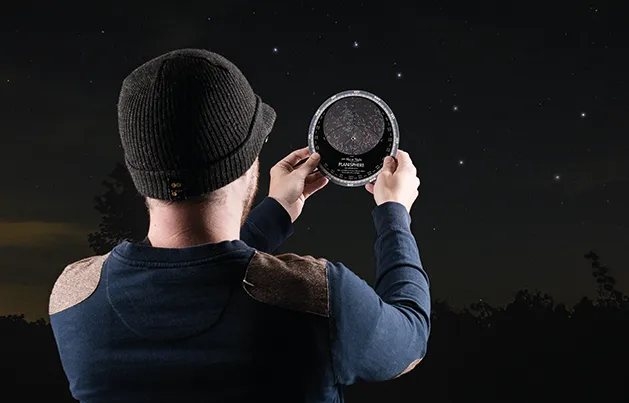
To some degree these are still the best way of navigating the night sky. A book or a chart, after all, doesn't need batteries or a 5G connection.
But astronomy stargazing apps can be a vital resource for beginners who want to get to know the night sky, or indeed for experienced observers who need to quickly locate a target.
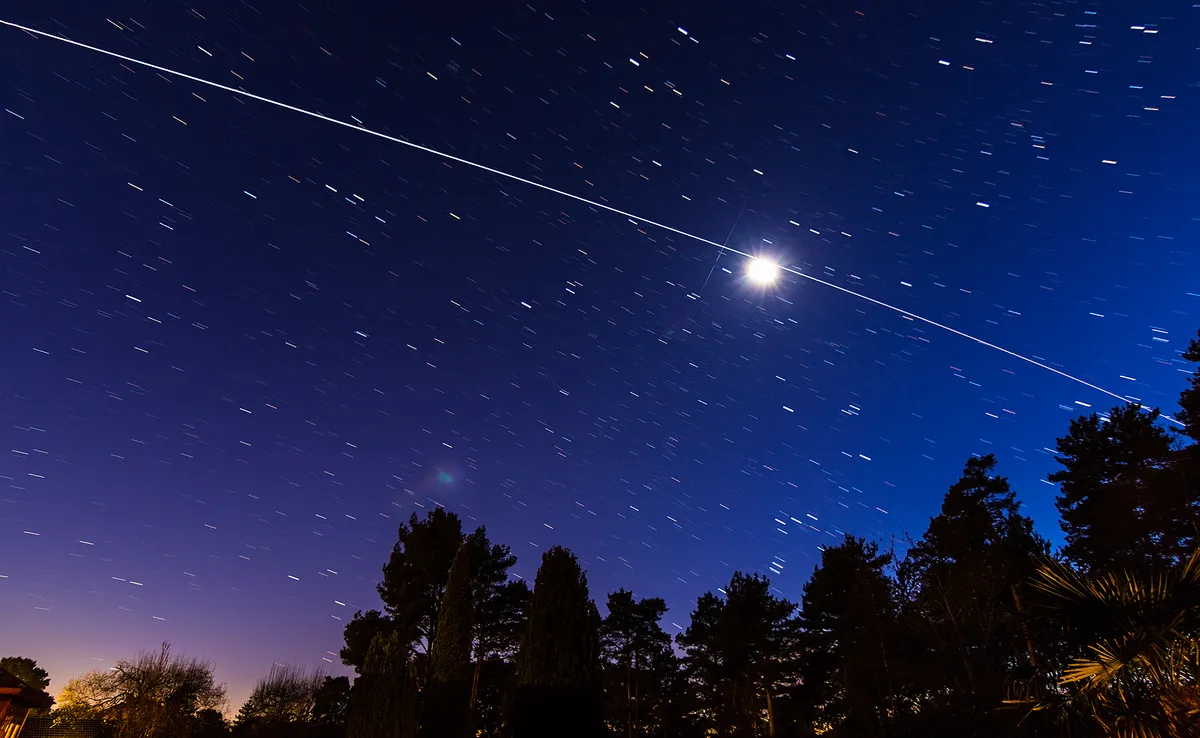
Many smartphone apps will tell you where and when to spot a satellite or how to see the International Space Station passing overhead.
They can tell you where Venus is on a particular evening or help you time observations of a lunar occultation.
Such transient phenomena are not covered by your average star chart or planisphere, as star charts are limited to the predictable, clockwork motions of the night sky like the appearance of certain stars and constellations at the same time every year.
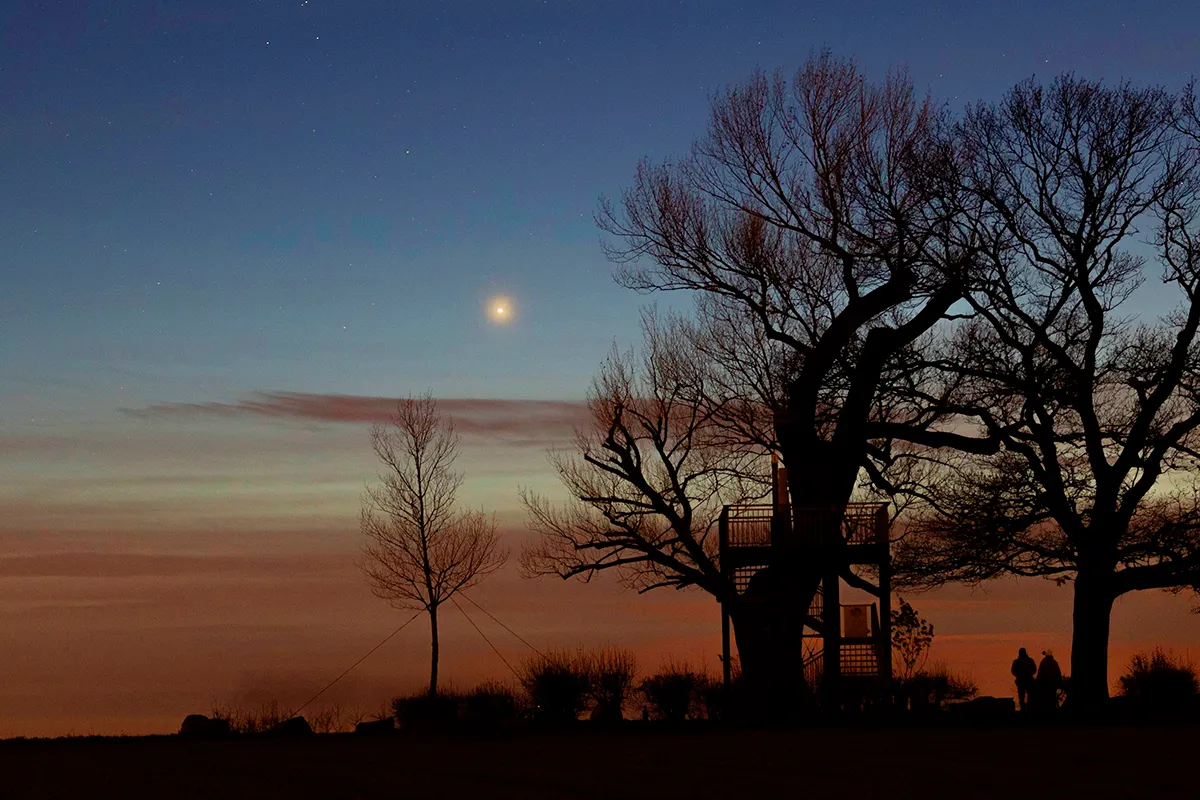
So even if you're the most ardent star chart user, it's worth arming your smartphone or tablet with a good app, at least as a backup.
But how can you know which are the best stargazing and astronomy apps?
Below we've selected some of the best apps available for iOS and Android, including a few astrophotography apps.
Some of the apps on our list are free, while others require subscriptions or in-app purchases to use all the available features.
One last thing: don't forget to turn your phone's screen red to protect your dark-adapted vision.
14 best stargazing and astronomy apps
Stellarium PLUS
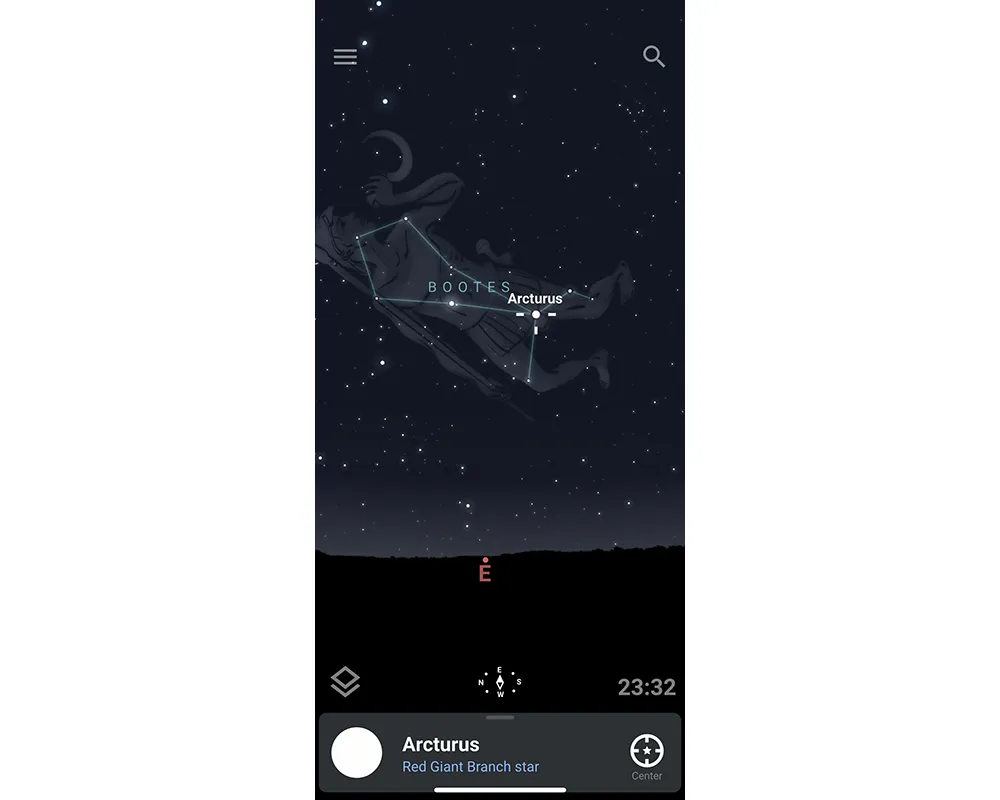
- Platform: iOS, Android
- Developer: Noctua Software
- Pros: Polished, open-source software
- Cons: Slightly reduced dataset when offline
- More info: stellarium-labs.com
Many amateur astronomers use the free and open source Stellarium planetarium software on their desktop computers, but the developer’s lesser-known apps are just as impressive.
A basic free version offers the usual augmented reality experience, with overlaid stars, constellations, planets, comets, satellites and deep-sky objects, making this one of the most popular astronomy stargazing apps.
The step-up Stellarium PLUS version – a separate app that costs £11.99 – increases the database from 10th magnitude to 22nd magnitude stars.
Stellarium PLUS is aimed more at telescope owners: it can control a scope using Celestron NexStar, Orion SynScan and LX200 serial protocols and it even simulates what an object will look like through a specific telescope.
The expanded database of stars includes the new Gaia DR2 catalogue of over 1.69 billion stars, as well as over 10,000 asteroids.
As with the desktop version you can zoom in on detailed images of deep-sky objects, and simulate landscapes and Earth’s atmosphere to show realistic sunrises, sunsets and atmospheric refraction. We also love Stellarium’s representations of constellations and asterisms from non-Western cultures.
A familiar experience for users of the desktop version, Stellarium PLUS offers telescope control and a massive database down to 22nd magnitude stars.
A browser version is also available, as well as a downloadable desktop version. For a complete tutorial on using the desktop version, read our Stellarium guide.
GoSkyWatch Planetarium
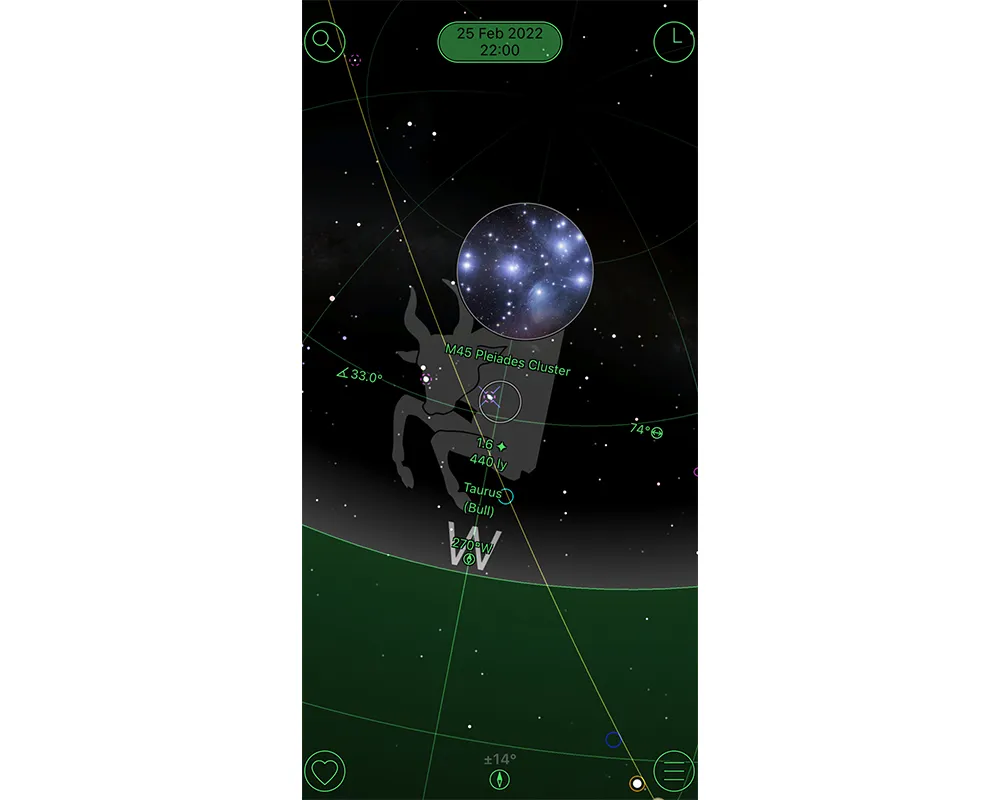
- Platform: iOS
- Developer: GoSoftWorks
- Pros: Smooth portrait-to-landscape transitions and touchless navigation
- Against: No free option and it only includes stars that are visible to the naked eye
- More info: gosoftworks.com/apps/goskywatch
A uniquely touchless experience and a slick design make GoSkyWatch one of the best apps for casual, naked-eye stargazers.
It’s got one of the best transitions from portrait to landscape: just swivel a smartphone and the night sky remains serenely still (most stargazing apps reset or refresh).
It also has a unique touchless navigation system that makes everything incredibly simple.
Instead of the user having to touch an object (and receiving reams of information), this app features a small target circle in the centre of the screen.
As you move the phone, stars and planets – even those too dim to see unaided – naturally pass through that circle.
As they do, up pops some simple information below the circle, including the name, constellation and how many lightyears away it is.
If it’s a planet, a small, image of it rotating briefly appears. Amusingly, it also has a ‘Pluto is a planet’ option.
Heavens-Above
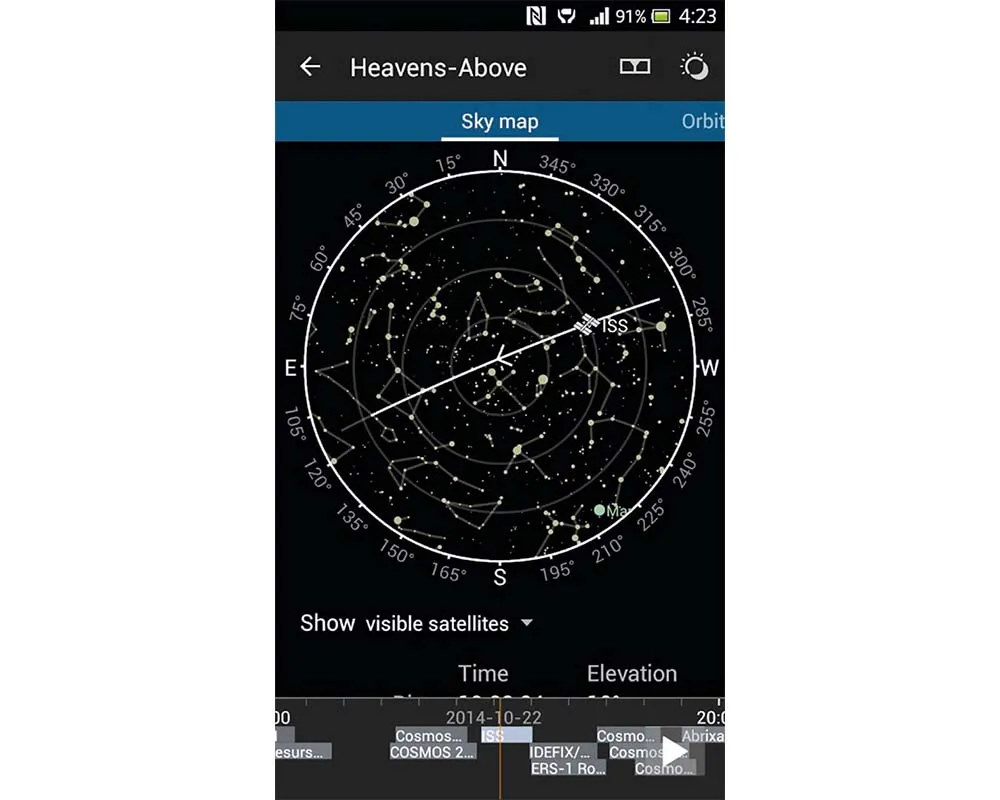
- Platform: Android
- Pros: Simple design; accurate predictions; red-light mode
- Cons: Only shows artificial satellites; adverts along the bottom
- More info: www.heavens-above.com
If you want to find a human-made object in orbit, you’ve come to the right place.
Anyone wanting to see the ISS or a bright satellite probably already knows about the excellent Heavens-Above website. This smartphone app uses the same prediction engine to make calculations specific to your GPS position.
It does so in a basic but thorough manner, with a list of events visible that night, as well as a dedicated section for each genre of object.
Sky Guide
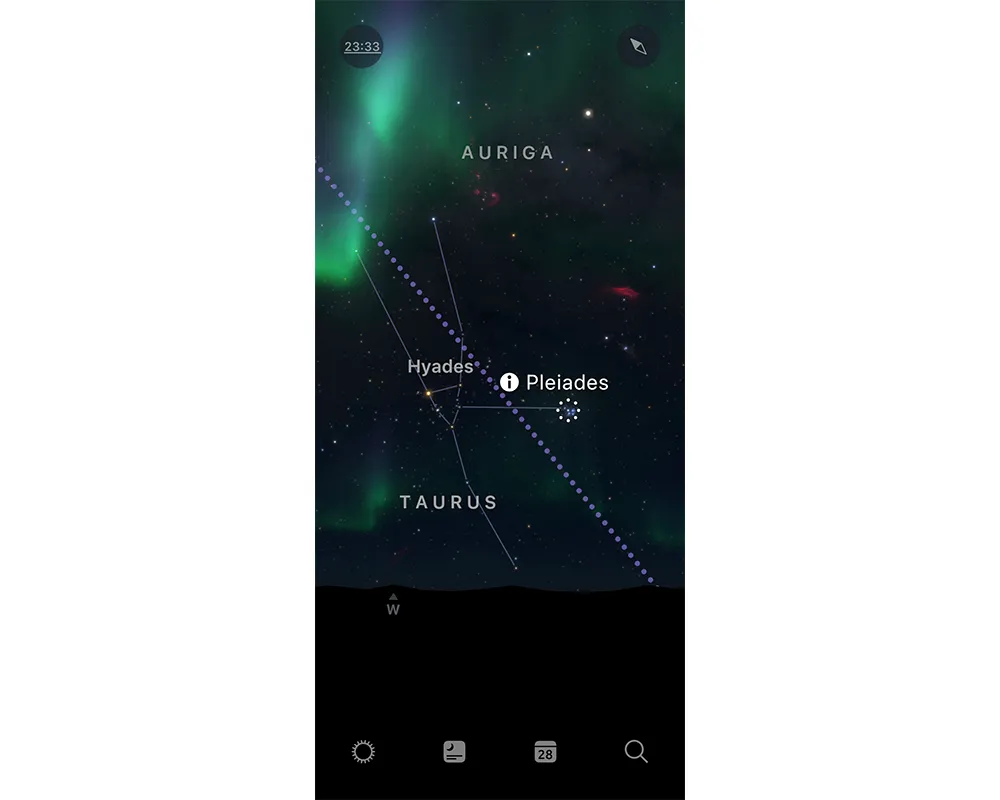
- Platform: iOS
- Developer Fifth Star Labs
- Pros: The basic version is free and visually impressive
- Cons: Odd aurora effects are misleading
- More info: www.fifthstarlabs.com
Sky Guide Version X saw upgraded visualisations and lots of great background astronomy news. The night sky has more realism than ever, including beautifully rendered pre-dawn light, twilight and dusk, as it takes on a more accurate, practical look than before.
We’re not quite sure, however, how useful it is to point a smartphone at the daytime sky and only get information for the Sun (though you can toggle on and off the ‘stars fade during day’ option). Ditto for some fine but fanciful aurora effects, which can appear on the app when pointed north and south after dark.
As well as a slick and simple design, complete with a cosmic calendar and a weather forecast, the Sky Guide app’s ‘featured’ section contains a mix of excellent news and features by science communicator Dr Jenifer Millard. The available upgrades increase the number of stars, objects, satellites and zoom power (as well as weather predictions and a dark-sky finder), but the free version – with 24 constellations, 100 deep-sky objects and ISS tracking – is likely to be enough for casual stargazers.
This is a slick and simple app with an excellent astronomy news and features section. The free version is a great option for casual stargazing.
Star Walk
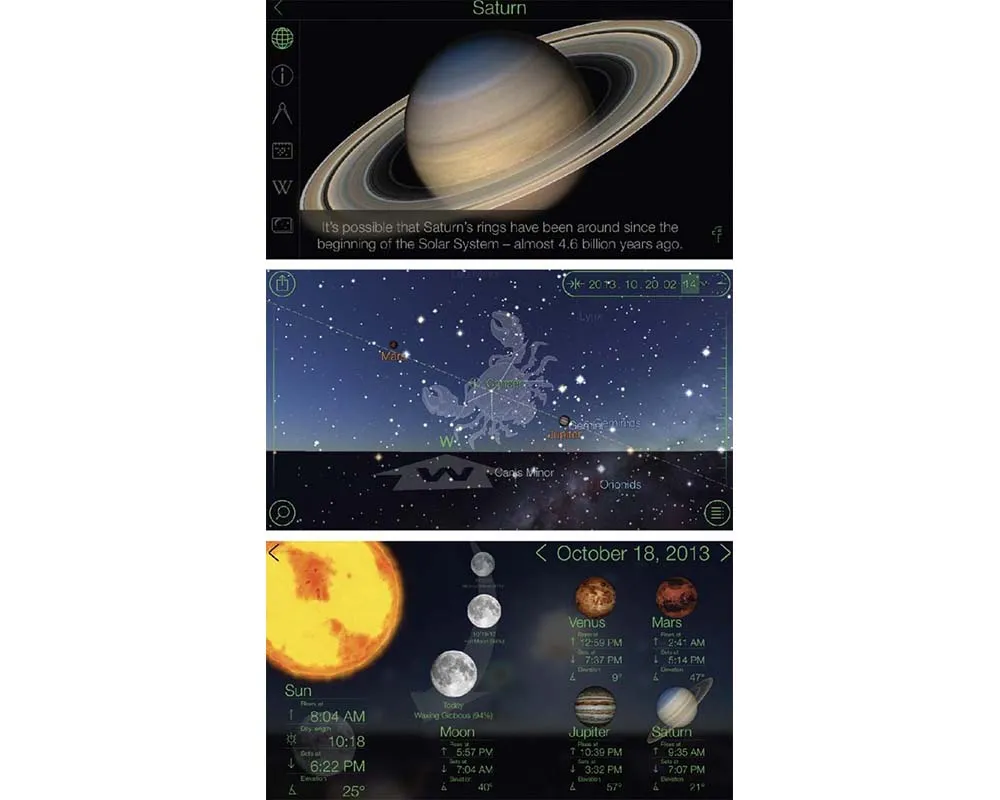
- Platform: iOS/Android
- Pros: Easy time travel; tablet version allows voice search; red-light mode
- Cons: Detailed content requires an in-app purchase
- More info: starwalk.space
One of the most beautifully designed of all astronomy stargazing apps, Star Walk has a useful time travel mode: touch the clock in the top-right corner then drag a finger up the side of the screen and the night sky goes into fast-forward, at any speed you desire.
That’s useful for planning long (and future) observing sessions, as is the Sky Live page, which gives at-a-glance rise and set times for planets and the Moon.
However, detailed information on constellations, deep-sky objects, planets and satellites will all cost you extra.
SkySafari
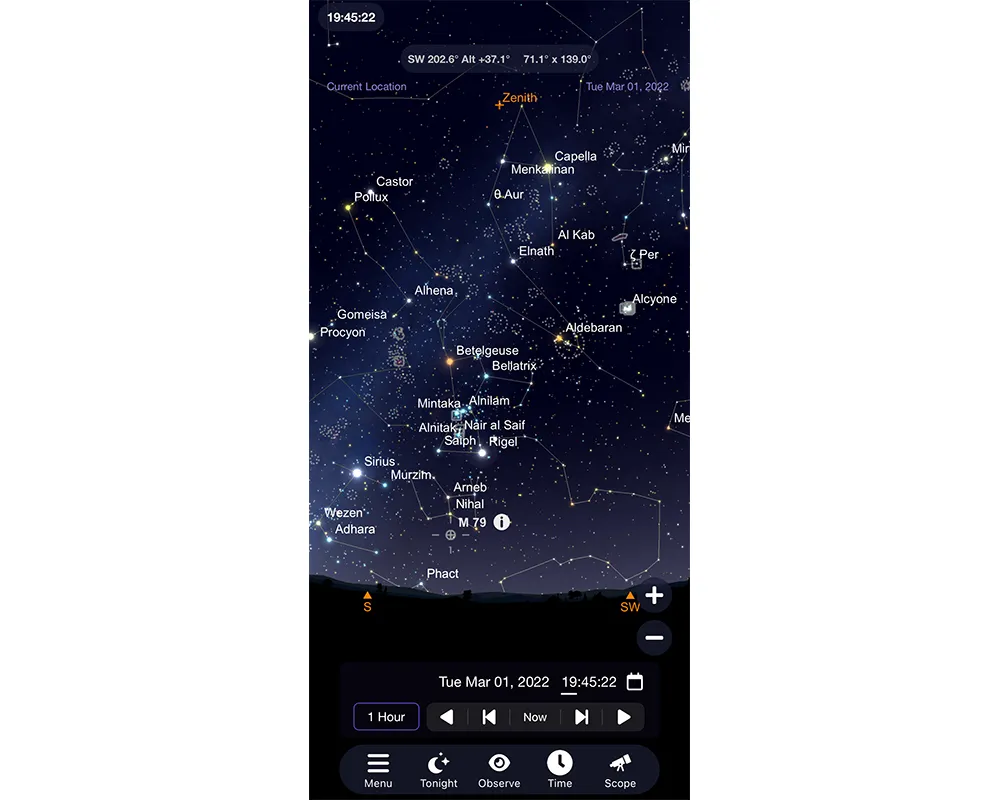
- Platform: iOS
- Developer: Simulation Curriculum Corp
- Pros: Telescope control and hobbyist features
- Against: Using the app requires a steep learning curve, and it’s expensive
- More info: skysafariastronomy.com
This app has been around for years in many guises and it keeps on improving. The very latest version comes in two distinct flavours, Plus and Pro, which cost £17.99 and £21.99 respectively. Please note that it’s not possible to upgrade from one to the other.
So what are the differences? The Plus version shows 2.5 million stars and 32,000 deep-sky objects, while the Pro version reveals 100 million stars, three million galaxies down to 18th magnitude, and 750,000 Solar System objects. Crucially, both play nicely with Wi-Fi-controlled telescopes (via the ASCOM Alpaca and INDI protocols), which puts even the basic Plus version ahead of most other stargazing apps.
Other must-have features on both versions include a ‘Sky Tonight’ area, notifications, a logbook, a stargazing session planning zone and a red-light mode to help your night vision. You can share your observations with others (also using SkySafari) via SkyCast, but we can’t quite see the point of ‘OneSky’, a mode that allows you to see what random other users are observing in real time.
Universe2go
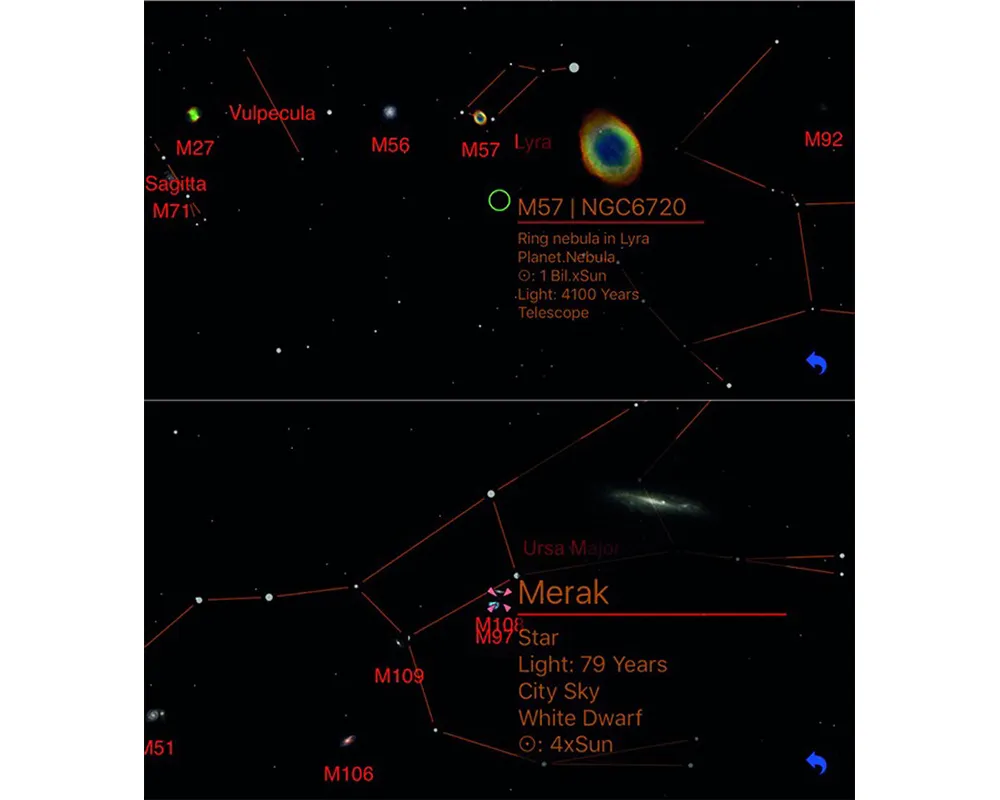
- Platform: iOS/Android
- Pros: Free app; excellent audio narration; accurate
- augmented reality overlays
- Cons: Larger smartphones won’t fit in viewer
- More info: universe2go.com
Of the many planetarium astronomy stargazing apps, there are few audio guides or augmented reality offerings that overlay information directly onto the night sky. This one is both.
For best results it should be used with a Universe2go star viewer (£79); insert a regular-sized phone into the casing and look through the viewer to see star names and constellation boundaries overlaid onto the real night sky.
Aim the virtual target at a specific object and an audio narration begins.
Without the viewer you can put the app into planetarium mode on a phone or tablet and hear the same audio.
Celestron SkyPortal
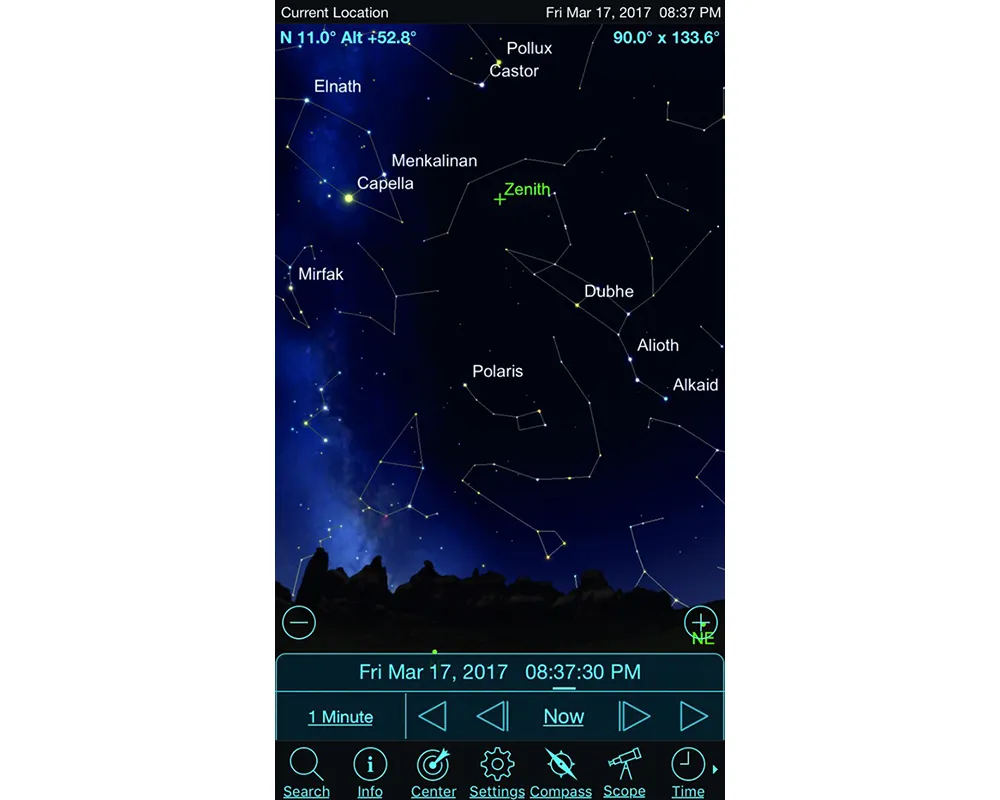
- Platform: iOS/Android
- Pros: Remote control of telescopes; audio tours in earphones
- Cons: Brand specific; large app at 296MB; red-light mode
- More info: www.celestron.com/pages/skyportal-mobile-app
Celestron’s SkyPortal can be used to wirelessly control models from both the brand’s NextStar Evolution line-up of Schmidt-Cassegrain telescopes, or with any computerized Celestron telescope when used with a SkyPortal Wi-Fi module (£120).
After an easy pairing and alignment process the app allows your phone to act as a wireless hand controller; tapping an object on the phone screen for your scope to centre in the eyepiece.
At its core is a great planetarium app, with four hours of audio commentary – and it’s available to download for free.
Scope Nights
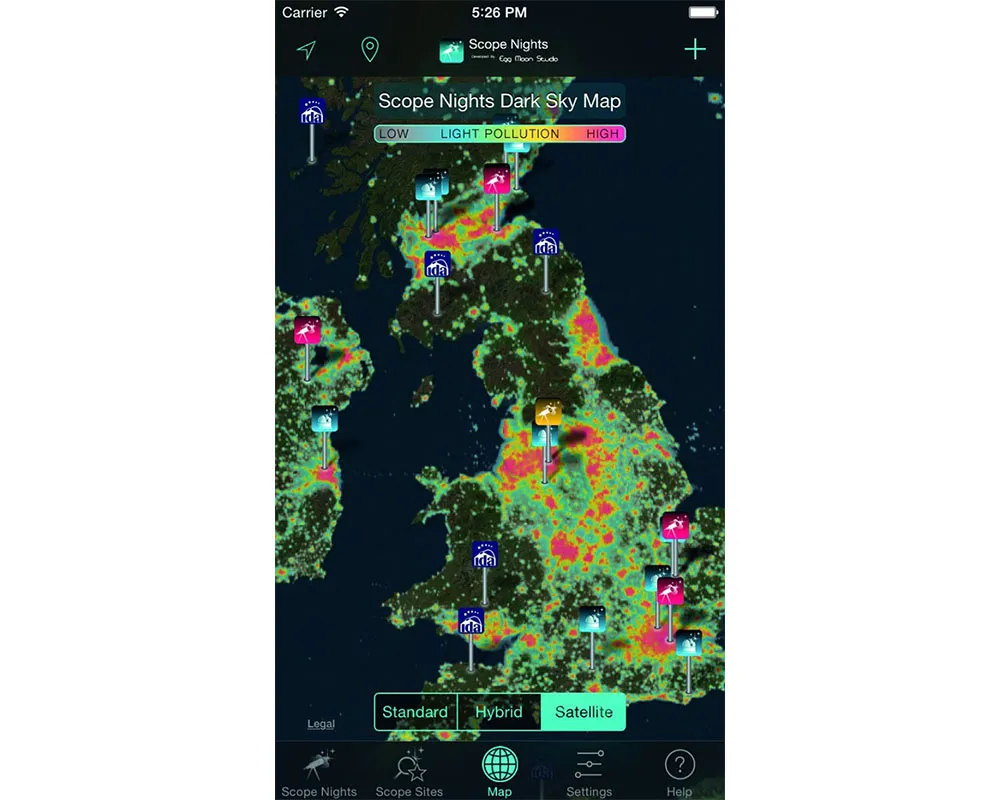
- Platform: iOS
- Pros: Forecasts for specific locations; dark-sky advice
- Cons: Forecasts not always accurate
- More info: https://eggmoonstudio.com/astronomy-weather-forecast
Every amateur astronomer yearns for clear, dark skies, and this exhaustive app helps you find them. It presents a simple 10-day weather forecast for your GPS location alongside a rating for all-night stargazing (poor, fair, good, etc).
But it’s the ‘Scope Sites’ section that impresses most, allowing users to both save favourite observing locations and search for new ones.
It even includes locations where amateur astronomers are regulars, such as observatories and officially designated dark-sky sites.
Lastly, a dark-sky map allows you to see how much light pollution there is at a site.
Night Sky
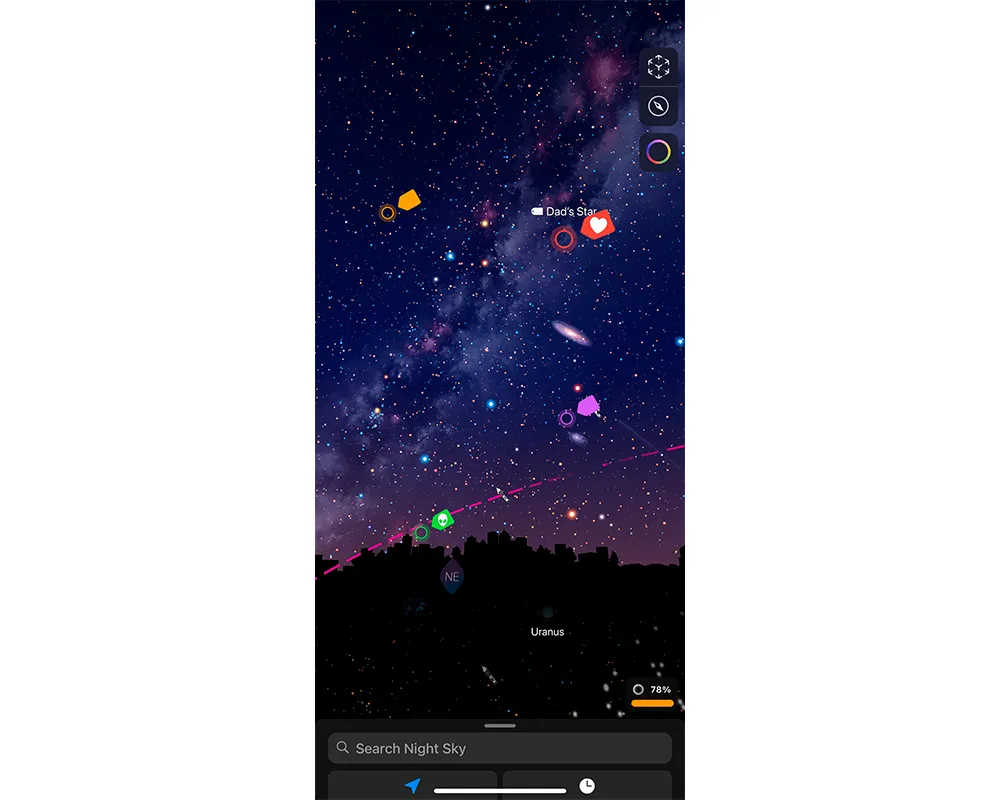
- Platform: iOS
- Developer iCandi Apps
- For: A clean interface and advanced features
- Against: Most useful features require a monthly or annual subscription
- More info: icandiapps.com
Why not share the night sky? The Night Sky app’s ‘connected stargazing’ feature is a virtual shared stargazing session, allowing members a FaceTime Audio call between iPhones to add stars, planets, constellations and satellites to the session in real time. However, it’s a feature that is only open to Night Sky Premium subscribers (£4.99 per month or £29.99 per year).
Fortunately, this is not the case with another new feature, ‘Sky Tags’, which is free to try out a couple of times: it allows objects in the sky to be saved for future reference and also shared via Apple’s iMessage for others with the Night Sky app to find.
As a bonus, you can attach observation notes and even your own astrophotography to each ‘Sky Tag’, which is a nice feature. Meanwhile, ‘Sky Timestamps’ lets you access the sky on specific dates, such as the dates of your next planned star party, but just as impressive is built-in data on local stargazing conditions and an auto-red light mode.
The free version is worth trying out, but the best features do require a subscription.
Sky Tonight
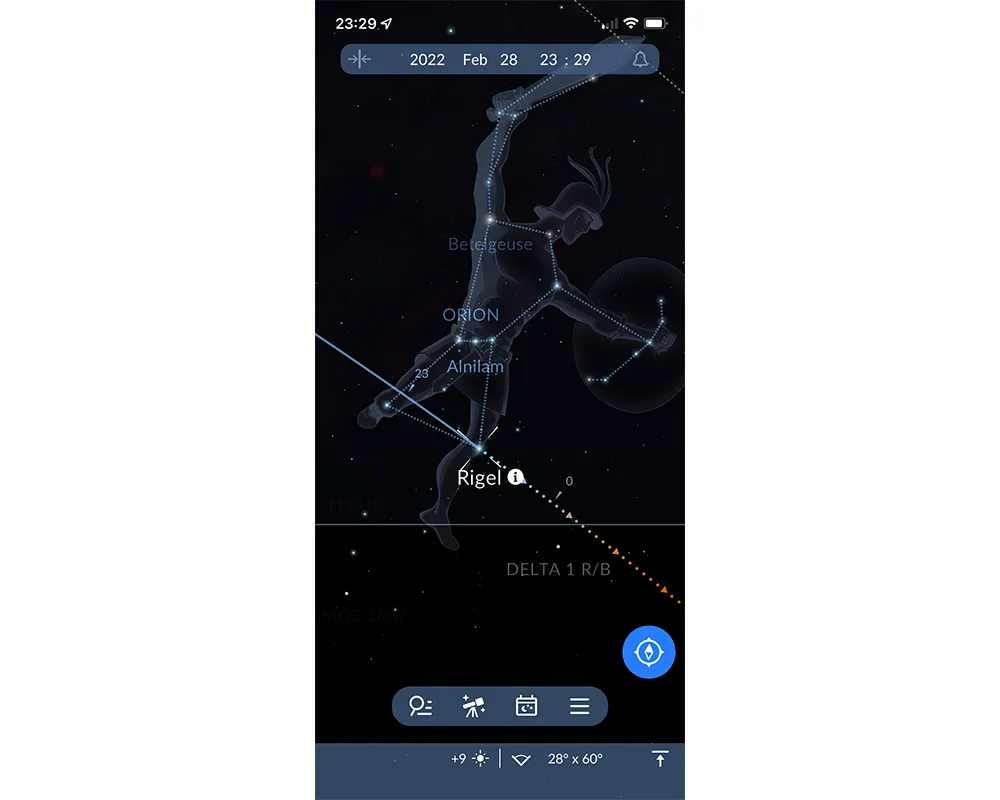
- Platform: iOS
- Developer Vito Technology
- For: Useful real-world stargazing features
- Against: No telescope control features
- More info: vitotechnology.com/apps/sky-tonight
When we are observing in the real world, trees and buildings often get in the way. Cue this well-designed new app’s ‘interactive trajectory’ feature, which will show you the precise movement of a selected object, relative to where you are, for the rest of the night. It’s a powerful addition that, when combined with the app’s ‘AR’ (Augmented Reality) mode, will overlay the sky map on the surroundings using a smartphone’s camera.
Meanwhile, on the interactive map, the magnitude limit of what is displayed can be changed using a slider at the bottom of the screen, so it’s obvious what you can see with the naked eye, binoculars and telescopes, respectively.
There’s an easily searchable calendar that presents a list of celestial events that are coming up in the user’s sky, complete with the best observation times, Moon phase and stargazing conditions. All the events can be saved to create an observing list, complete with notifications.
This is an impressive free app, but the events are limited to a total of three unless you take out the small Premium subscription.
Cosmic Watch
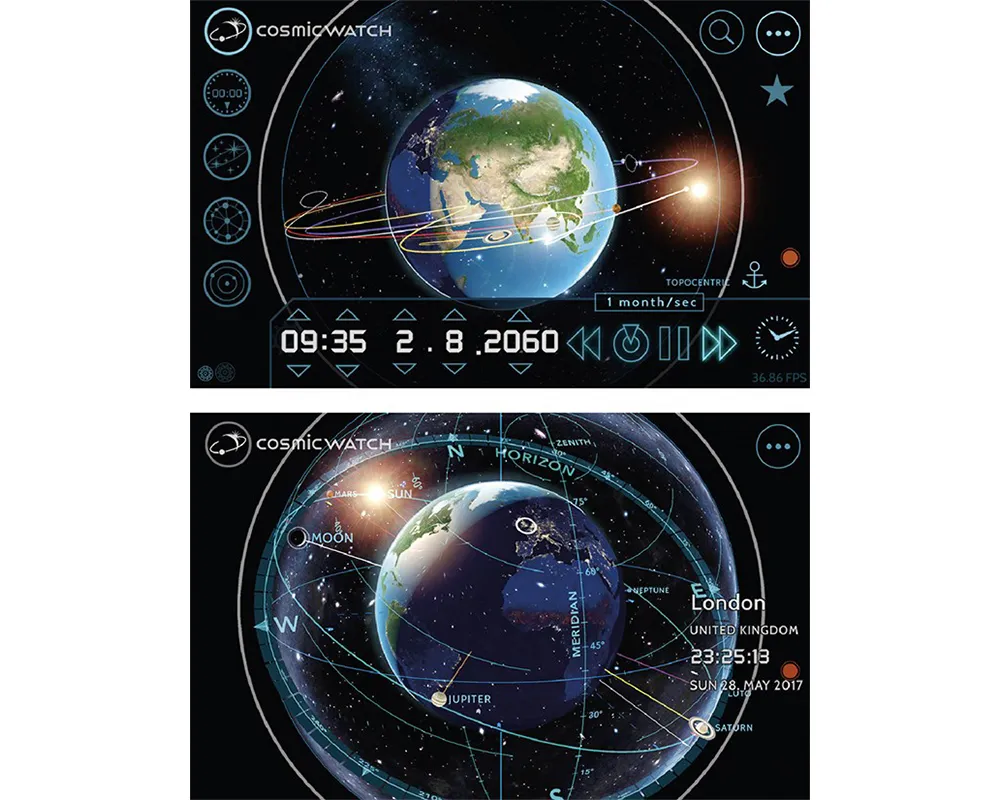
- Platform: iOS/Android
- Pros: Creative design; encourages a new perspective on stargazing
- Cons: Large app at 178MB
- More info:cosmic-watch.com
Time is not a number, it’s a precise position in space, as you’ll quickly learn from this stunning 3D app that’s both a standard world clock and an astronomical timepiece.
You look onto Earth from above your actual GPS location, and see which stars and constellations are overhead.
Meanwhile, the changing positions of the Sun, the Moon, the planets on their orbits, and even the shifting position of the Milky Way beyond are all integrated to create an app packed with detail.
Best smartphone apps for astrophotography
Here are a few apps that are good for those who like to photograph the night sky. For more advice, read our guide on how to photograph the night sky with a smartphone.
And if you're in the mood to soup up your smartphone to take better images, read our guides to the best smartphone tripods and the best smartphone zoom lenses.
Adobe Photoshop Express
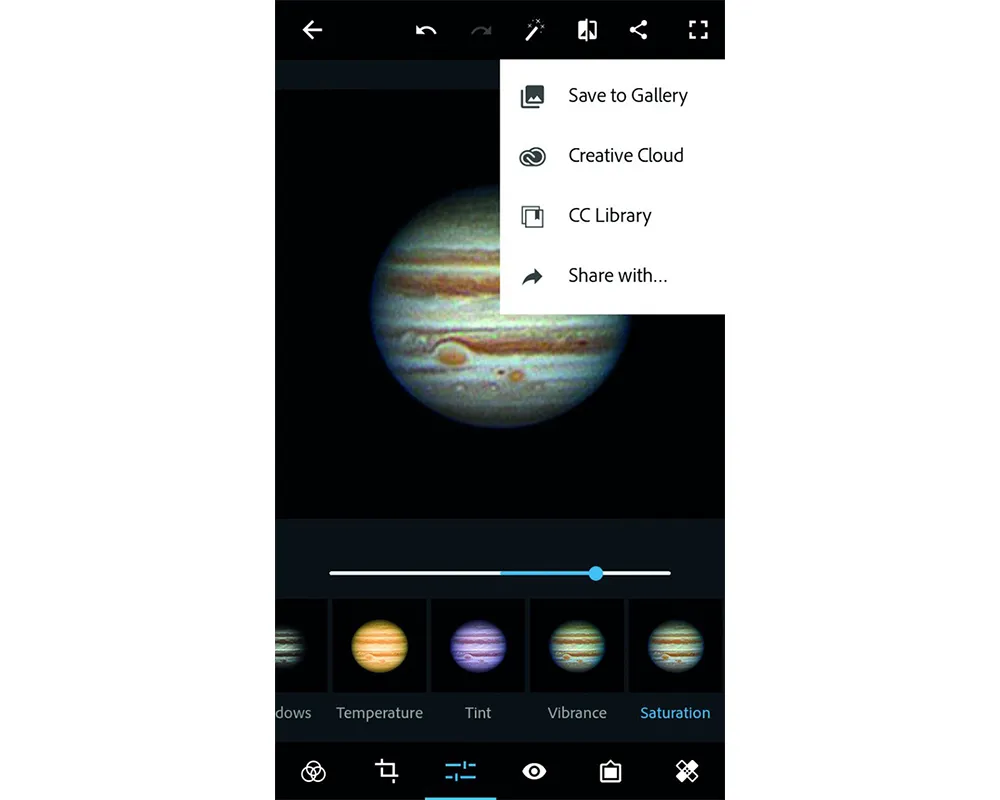
- Platform: iOS/Android/Windows Phone
- Pros: Effective noise reduction
- Cons: Fewer options than desktop version
- More info:adobe.com
If you’re doing astrophotography or creating nightscapes using a camera with Wi-Fi, this app version of Photoshop makes a good stand-in for the desktop software so popular with astro imagers, letting you edit and check photos on the go.
Key features include sharpen, clarity and exposure sliders, but most useful is a clever noise reduction feature that automatically zooms-in on the image.
It also includes shortcuts to upload finished images to everything from Adobe’s Creative Cloud to social media.
PhotoPills
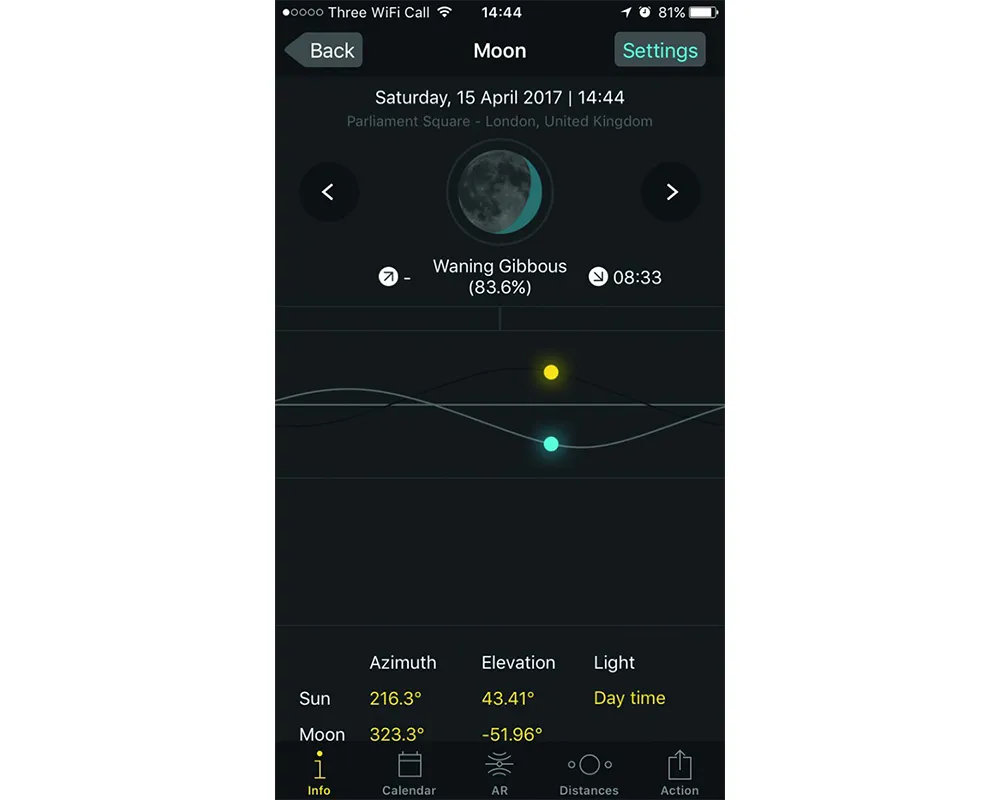
- Platform: iOS/Android
- Pros: Precise positioning for Sun; Moon and Milky Way
- Cons: Complex interface takes some to get used to
- More info: photopills.com
Want to capture that iconic moonrise or moonset photo where our lunar companion glows orange as it hangs above the horizon?
PhotoPills can help by showing you when and exactly where the Moon will be at dusk on the day of the full Moon, so you can plan the shot.
Remarkably, it can do the same for the Milky Way, which makes PhotoPills unique.
There are some great advice and tutorials on the developer’s website.
NightCap Pro
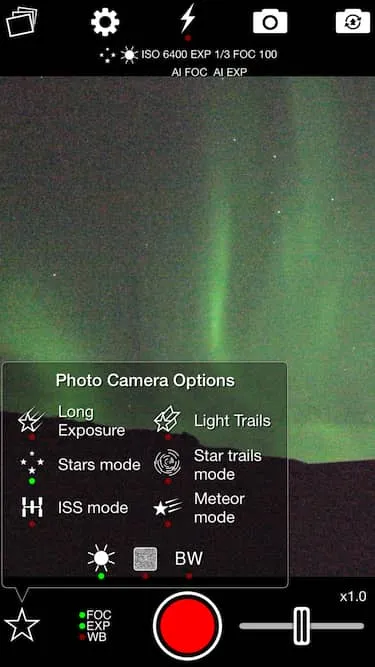
- Platform: iOS
- Pros: Manual camera controls; records photos as TIFF files
- Cons: Limited by your phone’s camera quality
- More info:nightcapcamera.com
Of the many apps that allow you to take images in low light conditions, NightCap Pro is the most astrophotography centred.
The app gives you the manual control to take DSLR-like nighttime photographs using a phone camera; presets include stars, the ISS and meteors; there’s even a star trails mode.
The ISO goes all the way up to 6400, there’s built-in noise reduction and an intervalometer for night sky timelapses, and it even records photos as TIFF files.
All that’s needed alongside it is a phone holder, a tripod, and clear skies.
